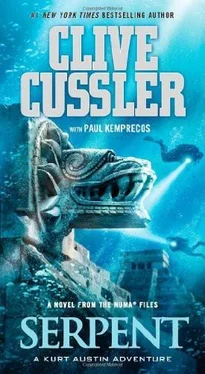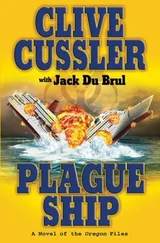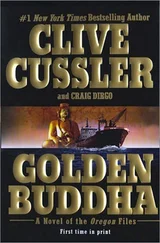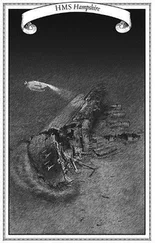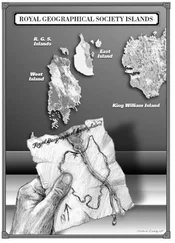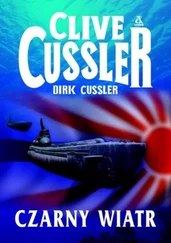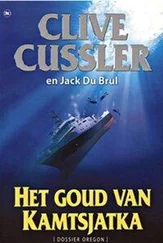"Let's not talk about past lives," he said. "I only do that to meet fascinating women."
"You do?' Nina said, with genuine shock at his frankness.
And to get invited to parties. It works. Here I am, and here you are."
"I'm disappointed. Everyone told me you were pixilated."
"I don't even know how to spell that," he said with a sigh. "You know, we are such a dull gray stuffy bunch, we professors. We take ourselves far too seriously, harrumphing about as if we were truly wise men and not just overeducated nerds. What's wrong with being a little colorful to make oneself stand out from the crowd? There's the added advantage of being shunned by those stodgy old fussbudgets."
"The UFO abductees. That was all a sham?"
"Heavens no. I truly believe they believe they were kidnapped. Some of my colleagues do, too; they're just jealous because they weren't. But let's talk about you. I've heard good things about your work."
And talk they did. Behind the nutty professor's mad facade lurked an interesting and interested person. They did not become romantically involved, as he would have liked. Even better, they were friends and colleagues who respected. each other.
Orville," came the voice on the phone. Doc never said hello.
"Hi, Doc. It's Nina" He hated what he called banalities, so she cut right to the chase. "I need your help with an odd request."
"Odd is my middle name. What can I do for you?"
Nina relayed Austin's query.
"You know, that sounds vaguely familiar."
"You're not joking, Doc."
"Nononono. It was something in my Fortean file." Orville considered himself a modern day version of Charles Fort, the nineteenth-century journalist who collected stories about odd happenings such as red snow, unexplained lights, or frogs falling from the sky.
"Why does that not surprise me?" Nina said.
"I'm always reorganizing the file. You never can tell when someone will call arid ask a crazy question." He hung up; Orville was not known for saying goodbye, either.
Nina shrugged and went back to her work. Before long the fax hummed and a single sheet slid out. At the top was a handscrawled note: Ask and ye shall receive. Love, Doc. It was a copy of a newspaper clip from the Boston Globe dated March 1956:
MYSTERY ITALIAN ARTIFACT ON ITS WAY TO AMERICA
Genoa, Italy (AP)A mysterious stone tablet unearthed in a dusty museum basement may soon yield its ancient secrets.
The massive inscribed stela, carved with lifesized figures and strange writing, was discovered in the Museo Archeologico. Florence, in March of this year.
Preparations are being made to ship it to the United States where it will be examined by experts.
The museum was planning an exhibition entitled "Treasures from the Basement." to bring to light items from its collection that had languished in storage for decades.
The stone artifact is in the shape of a rectangular slab, giving rise to speculation that it might have been part of a wall. It is more than six feet tall, four feet wide, and a foot thick.
What have puzzled scholars who have seen it and stirred up controversy in the scientific community are the carvings on one side.
Some maintain that the figures and writing are without a doubt of Central American, probably Mayan, origin.
"This is not a great mystery," says Dr. Stephano Gallo, head curator at the museum. "Even if it is Mayan it could have been brought back from the Americas during the Spanish Conquest."
Why they transported the stone across the ocean is another question. "The Spanish were primarily interested in gold and slaves, not archaeology. So someone must have seen some value in this artifact to go to the trouble of moving it. It is not like some miniature statue a soldier of Cortez might have picked up as a souvenir."
Efforts to learn where the artifact came from have met with limited success. The museum catalog indicates that the slab was donated by trustees for the Alberti estate. The Alberti family can trace its maternal lineage to the Spanish court during the time of Ferdinand and Isabella.
A spokesman for the estate says the family has no information available, unlike other items in the collection. The Alberti family was originally from Genoa and purchased many Christopher Columbus papers and memorabilia from Luis Columbus, grandson of the explorer.
Historians who have scoured records of the four Columbus voyages can find no mention of the artifact.
The stone will soon be on an ocean voyage of its own. It will be shipped to the Peabody Museum at Harvard University, Cambridge, Mass., for study by Central American experts. This time it will be traveling in style aboard the luxury Italian liner Andrea Doria.
Because of its size and weight, it will be shipped in an armored truck that is carrying other valuable items to America.
The article was illustrated with a photo of the slab taken at a distance to include the whole tablet in the frame. An unidentified man stood awkwardly next to the artifact, where he was dwarfed by its mass. The photographer must have grabbed the nearest body to pose beside the object and give it scale. The newspaper was printed back in the days of letterpress, and the. photo reproduction wasn't very sharp. Nina could make out faint symbols, glyphs, and figures carved into the stone's surface. She examined the picture using a magnifying glass. No use. The enlarged dot reproduction was even fuzzier than the original.
She called Doc.
"Well, what do you think?" he said.
"The important thing is what you think. You're the expert in this area."
"Well, you're right, of course." Orville's modesty could be underwhelming. "It's tough without ,seeing the actual thing, but it looks to me to be similar to the Dresden Codex, one of the few Mayan books that the Spanish didn't burn. I'm thinking about the calendar pages, cycles of the planet Venus, and so on. Venus was very important to the postclassic Maya. The planet represented Kukulcan, the lightskinned bearded god the Toltecs called Quetzalcoatl. The Feathered Serpent. The. Maya plotted the travels of Venus practically to the second. Beyond that it's difficult to say without seeing the real thing."
"Nothing else?"
"Not unless I come across a good picture or artistic rendition."
"What about Professor Gallo's comment, about this thing being no great mystery?"
"Oh, he's absolutely right. The fact that a Mayan artifact may have been found in Italy is not a big deal. No more than the fact that you can walk into the British Museum in London and find the Elgin marbles from the Parthenon. The important part of the equation is provenance, as you know. Not just where the artifact was found but how it got there."
"What about the Columbus letter I told you about? It mentions an object similar to this. How does that tie in with the mention of the Alberti family's Columbus collection?"
"You cannot jump to conclusions on the basis of an old newspaper article. You also told me there are doubts as to the authenticity of this letter. Even if the letter were the real McCoy, we'd need more proof that the objects were one and the same. Tantalizing thought, though. It was entirely possible for Columbus to have shipped it home without anyone knowing. He was known as a devious man. Some believe he falsified his mileage readings on his first voyage so the crew wouldn't know how far they were from land. It would have been in character for Columbus to hide something. Unfortunately we have to remember we're scientists, not writers of popular semifictional archaeological claptrap."
Orville was entirely right. It would be unprofessional to jump to conclusions.
"The Italian professor made a good point," Nina pointed out. "The Spanish were interested in plunder, not science."
"True. Cortez was certainly no Napoleon, who brought along the scientists who discovered the Rosetta Stone."
Читать дальше
